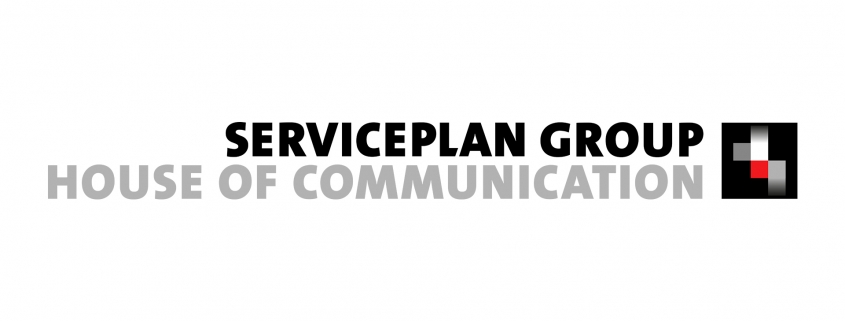- The most relevant SEO News for February 2020 - 26. February 2020
- The most relevant SEO News for January 2020 - 21. January 2020
- The most relevant SEO News for December 2019 - 23. December 2019
- The most relevant SEO News for November 2019 - 25. November 2019
- Don’t be afraid of Google’s BERT - 31. October 2019
- The most relevant SEO News for October 2019 - 31. October 2019
- The most relevant SEO News for September 2019 - 25. September 2019
If you think this June issue of SEO News will only be about the impact of Google’s Mobile Index, think again. We prefer to wait a bit on that. As the summer begins, we are therefore focusing on the return of a powerful tool, the prerequisites for good SEO work, and an industry in the throes of fake news.
1) The return of Google image search
The image bubble has burst. After a long legal dispute with the image agency Getty Images, Google decided to make some changes to its popular image search function. How positively these changes have affected website operators can be seen from a survey by the US search expert Anthony Mueller. But let’s start from the beginning. In January 2013, Google changed the way its image search function worked so that every user could directly view and download found images. A key aspect of this was that the files were buffered on the servers of the search engine, where users could access them with the ‘View Image’ button. As a consequence, clicks on the sites of content providers and rights holders nearly vanished and systematic traffic from image searches plummeted by more than 70 per cent in some cases. This development was especially perilous for websites that focus on visual impact for inspiration, such as fashion or furniture merchants, and had put a lot of effort into optimising their image content. Particularly for e-commerce operators, this collapse in traffic also meant a collapse in turnover. Three years later, the renowned Getty Images agency submitted a competitiveness complaint to the European Commission, apparently hoping that ‘Old Europe’ would again set things right. Getty’s efforts were rewarded, with the result that the ‘View Image’ button disappeared from Google image search in early 2018. Interested users had to visit the original sites to access the original files. That stimulated Mueller, the well-connected search expert, to ask some 60 large enterprises worldwide, if after nearly six months following the change, they had seen any impact in their website traffic. The result was that on average, visits from Google image search have risen by 37 per cent. Although the figures for impressions and ranking positions in image search have remained relatively stable, click-throughs have risen dramatically with all of the surveyed enterprises. The survey also indicates that conversions from image searches have grown by about 10 per cent. Of course, savvy users can still switch to other search engines, such as Microsoft’s Bing or Duck Go. Those two search engines never got rid of direct access to image files. However, due to Google’s market power this is exactly the right time to give new priority to the optimisation of image content and exploit the new growth potential, according to the author. Presently text search is still the dominant method for acquiring information. However, there are signs of a paradigm shift to visual search, particularly in retail.
2) Getting better results with smart SEO goals
Thanks to the Internet, contacts and advertising impact are now more measurable than ever before. Although the digital revolution in advertising is no longer in its infancy, it has by no means reached the end of its evolution. With digital campaigns, it is easy to define suitable key figures to measure impact and effectiveness, and it is not technically difficult to obtain corresponding campaign data. However, defining goals for search engine optimisation is not so easy. For example, Google stopped offering keyword-level performance data for systematic searches many years ago. Marketing managers and SEO experts are therefore repeatedly confronted with the challenge of developing an SEO KPI concept that visualises optimisation results and, above all, gets the company’s budget controller onside for professional SEO work. For this reason, search guru Rand Fishkin has put together some rules for formulating the goals of SEO activities, which are interesting to advertisers and enterprises alike. According to Fishkin, the main rule is that the business goals must form the basis for the SEO concept. The next step is to break down these higher-level expectations, which are usually financial, into marketing goals – for example, by defining requirements for various communication channels along the customer journey. The actual SEO goals come into view only after this point, and they can be mapped out in the last step using just six metrics. These KPIs are ranking positions, visitors from systematic searches (divided into brand searches and generic search objectives), enterprise representation with various hits on the results page of a search term, search volume, link quality and quantity, and direct traffic from link referrals. Fishkin checks his concept against two different example customers. For example, a pure online mail-order shoe seller has a fairly simple business goal: boosting turnover by 30 per cent in the core target group. In Fishkin’s view, the next step is to specify in the marketing plan that this growth will be generated by a high probability of conversions at the end of the customer journey. From that you can derive an SEO goal of 70 per cent growth in systematic traffic. In order to achieve this goal, you then adopt and carry out implementable SEO measures. For the contrasting scenario of local SEO without reference to e-commerce, Fishkin’s example is a theatre that wants to draw more visitors from the surrounding area. In this case the regions where the target audience should be addressed are defined in the marketing plan. The SEO plan then consists of setting up local landing pages, utilising theatre reviews and blogs, and other content-related and locally driven measures. The advantage of this sort of top-down approach is the alignment of individual SEO measures, which are often difficult to grasp, to the overall aims of the organisation. According to Fishkin, the rewards are higher esteem and faster implementation of the laborious SEO work.
3) Fake news threatens the existence of the SEO industry
Did you get a shock when you read this heading? That’s exactly what we wanted, in order to get your attention. Of course, you rarely see such highly charged headings on SEO blogs, but competition in the IT sector does not spare the search industry. Every year we hear that SEO is dead, but supply and demand for optimisation services have growing steadily for more than 15 years. A large part of that is doubtless due to the intensive PR activities of the parties concerned. Starting as the hobby of a few individuals, over the course of time search engine optimisation has developed into specialised agencies and migrated to in-house teams of enterprises. Along the way there has been continual testing, experimentation and comparison, SEO expertise has been constantly expanded, and above all a lot has been written about it. SEO blogs therefore serve on the one hand as an inexhaustible source of information – a sort of global treasure of SEO experience, forming the basis for success. On the other hand, postings on search topics are also a form of self-advertising and customer acquisition for service providers and agencies. John Mueller, the well known Senior Webmaster Trends Analyst at Google, has now criticised some SEO blogs. He claims that some of them use postings as click bait. That all started with a report on an alleged bug in an SEO plugin for WordPress. In the course of the discussion about the tool, information was presented in abridged form on some SEO sites and important statements by John Mueller on behalf of Google were not passed on. He is now saying that postings should pay attention to all aspects of complex search topics. What matters is to create long-term value with balanced reporting. People should resist the temptation to get quick clicks. According to Mueller, the goal should be to convey knowledge. It is clear that even the search scene cannot evade the grasp of digital attention. It looks like speed has become a goal in itself, and it is assumed that online readers no longer have time to pay attention to the details. In this way our own methods endanger the industry’s collective wealth of experience. In an increasingly complex search world, it is particularly important to not lose sight of the details, and we have to take the time for a thorough treatment of each topic. For example, the threat to the existence of our democracy from the SEO activities of Russian troll farms is a topic that still needs a thorough treatment.
This page is available in DE







